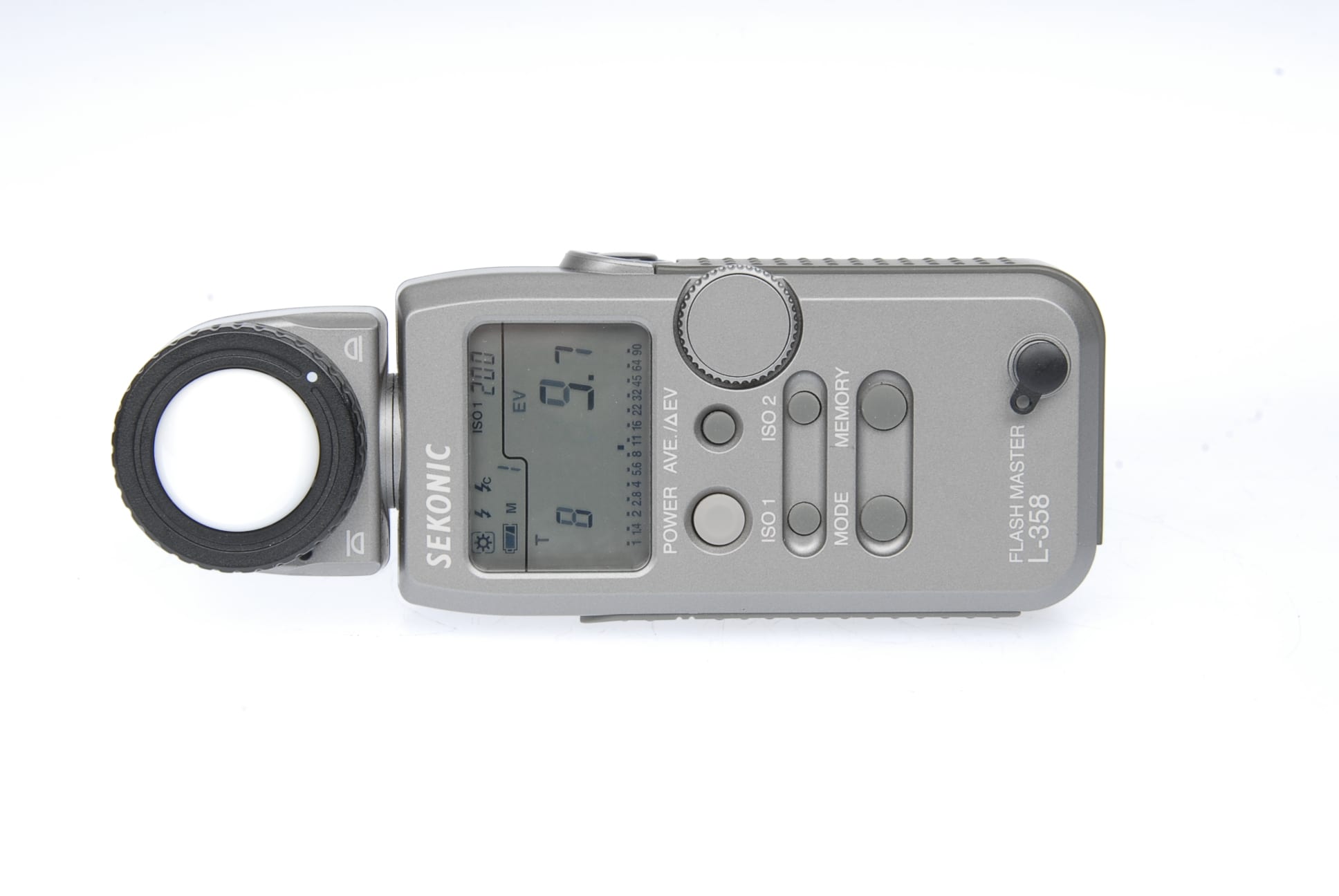Understanding Light Meters

[fusion_text]Light meters are instruments that measure light, so that you can set the correct exposure on your camera (the shutter speed and aperture, based on a given film speed ).
Does my camera have a light meter in it?
Automatic cameras have a light meter built in. This will control either the shutter speed, aperture or very often both. Many older cameras do not have a light meter built in, so you will need a seperate hand held one. The Olympus Trip is an example of a camera with fully automatic exposure.
Other cameras have built in light meters but require you to set the shutter speed and aperture. Typically, there is a needle that indicates the light, and you adjust the shutter and aperture so that the camera’s setting aligns with the needle. The Nikon Photomic F is a camera with semi-automatic exposure, where the camera indicates a suggested exposure and they are manually set on the camera.
Do I need a light meter?
Maybe. It is possible to estimate, often quite accuratly, the needed exposure using the ‘Sunny 16’ rule. This is a method of guessing exposure, fairly accurately, using a formula and table of lighting conditions. However, a light meter will allow you to measure the light, providing greater control of the camera.
Types of light reading:
Reflected – taken from the position that the camera is located. The amount of light that is reflected by the subject is measured. The amount of light that is reflected depending on the subject; for example a black cat will give a low light reading, and a snowy scene will give a higher reading.
Incident – measured by holding the meter against the subject, and measures the light that is falling on the subject. Light readings are consistent for both light and dark subjects.
Types of light meter:
Selenium – the earliest and redimentary form of light meter. When light hits the Selenium cell a very small electric current is generated. This current can be used to move a needle. This needle indicates how much light there is, and be used to calcualte the exposure needed.
- Advantages:
– do not require a battery
– easy to find. They are abundant and inexpensive - Disadvantages:
– Selenium cells loose their effectiveness over time. Meters made in the 1960’s still operate but no longer give accurate readings
– do not work in low light situations
– not very precise. A small needle movement must be interpreted
Cds (Cadmium Sulphide)
Battery powered metered that are a significant improvement and suitable for use today.
- Advantages
– work better in low light situations
– can provide a digital reading, such as a numeric display or +/- lights
– more accurate than Selenium - Disadvantages
– require a battery
– some require a 1.35V Mercury-oxide battery, which are no longer available. Instead, you can use a Weincell (zinc air) battery. A 1.5V alkaline battery will work, though the slight difference in voltage means that a correction to the reading is needed.
Silicon –
The most modern light meter which contains a silicon cell. It is battery powered and will very likely have a complex LCD display.
- Advantages
– Sensitive and will quickly detect minor changes of light levels
– may come with multiple modes and settings
– works in very low light situations - Disadvantages
– Requires a battery
– Newest, so will be the dearest





